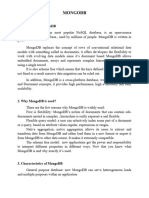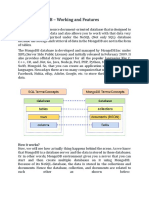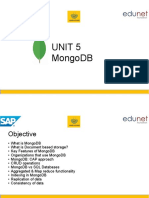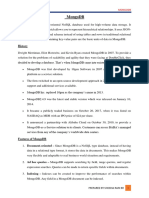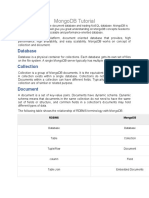0% found this document useful (0 votes)
13 views3 pagesMongo DB
MongoDB is a flexible, document-oriented database management system that offers advantages over traditional relational databases, particularly in handling large volumes of unstructured data. Its schema-less design allows for easy scalability and adaptability, making it suitable for industries like e-commerce and finance that require real-time data analysis. With features like sharding and efficient data handling, MongoDB is positioned to meet the evolving demands of modern applications.
Uploaded by
ecclesiacatholica777Copyright
© © All Rights Reserved
We take content rights seriously. If you suspect this is your content, claim it here.
Available Formats
Download as DOCX, PDF, TXT or read online on Scribd
0% found this document useful (0 votes)
13 views3 pagesMongo DB
MongoDB is a flexible, document-oriented database management system that offers advantages over traditional relational databases, particularly in handling large volumes of unstructured data. Its schema-less design allows for easy scalability and adaptability, making it suitable for industries like e-commerce and finance that require real-time data analysis. With features like sharding and efficient data handling, MongoDB is positioned to meet the evolving demands of modern applications.
Uploaded by
ecclesiacatholica777Copyright
© © All Rights Reserved
We take content rights seriously. If you suspect this is your content, claim it here.
Available Formats
Download as DOCX, PDF, TXT or read online on Scribd
/ 3
















